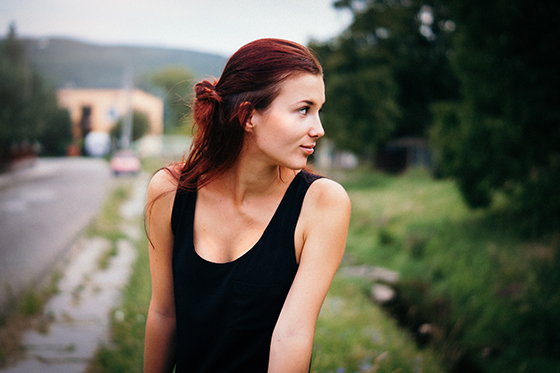The Art of Costumes and Historical Inspirations
Creating a unique costume for a Renaissance Faire is an adventure that combines historical authenticity with personal creativity. A well-crafted costume transports you to a world filled with knights, jesters, and maidens, while also allowing your individuality to shine through the fabric and embellishments. To begin this creative journey, delve into the rich history of the Renaissance period and let it guide your design choices.
The Renaissance era, spanning from the 14th to the 17th century, was a time of great cultural rebirth and innovation in Europe. This period saw a revival of interest in the classical art, literature, and knowledge of ancient Greece and Rome. When designing your costume, consider elements such as ruffs, doublets, bodices, and flowing gowns, which were characteristic of Renaissance fashion. Researching historical garments will not only provide you with a foundation for your design but will also ensure your costume is a respectful nod to the time period it seeks to represent.
Selecting Your Character’s Story and Role
Before picking up a needle and thread or laying out any fabric, take a moment to decide who your character will be at the Renaissance Faire. Are you a noble lady, a gallant knight, a mischievous jester, or perhaps a skilled artisan? Each role has distinct attire associated with it, guiding your costume choices and helping create a more cohesive story.
For instance, a noblewoman might don a dress made of rich velvets or brocades, adorned with intricate embroidery and pearls, reflecting her high status and refined taste. A jester, on the other hand, would wear brightly colored motley clothes, complete with bells, pompoms, and a whimsical hat designed to amuse and entertain. By selecting a character, you give direction to your costume creation process and ensure every element contributes to the overall narrative.

Sourcing Materials: Fabric, Trimmings, and Accessories
With your character firmly in mind, it’s time to gather materials. Seek out specialty fabric stores that offer historical textiles like silks, satins, and brocades. Vintage shops and second-hand stores can also be treasure troves for unique finds that add authenticity to your costume. Don’t shy away from unconventional places—sometimes the most unexpected materials can make for the most striking garments.
Trimmings play a crucial role in completing your look. Lace, ribbons, beads, and even bits of antique lace or buttons can add depth and character to your costume. Consider visiting craft stores or online retailers specializing in historical costuming supplies to find just the right pieces. Remember, it’s often the small details that bring a costume from good to extraordinary.
Accessories are equally important. Whether it’s a simple handkerchief tucked into a sleeve, a leather belt cinched around the waist, or a finely crafted dagger hanging at the hip, each accessory helps define your character and enhances the overall presentation. Handmade or custom accessories can add a personalized touch, making your costume truly one-of-a-kind.
Crafting with Purpose: Sewing and Embellishment Techniques
Once your materials are gathered, it’s time to start crafting your masterpiece. If sewing isn’t your forte, fear not; there’s plenty you can do without being an expert seamstress. Basic stitches can secure fabric together, while more advanced techniques like pintucking and cording can add texture and dimension to your garment. Online tutorials and historical sewing guides can be invaluable resources as you navigate these techniques.

Embellishments are where personal creativity comes to the forefront. Embroidering patterns onto fabric can transform a simple piece into something elaborate. Beading, appliqué work, and even adding feathers can elevate your costume, making it stand out in a crowd. Consider using period-appropriate methods for embellishments to maintain the historical accuracy of your costume.
If sewing feels daunting, no-sew options are available. Many period costumes can be assembled using fabric glue, ribbon ties, or strategically placed brooches and pins. These methods allow for flexibility and quick adjustments, ensuring your costume fits well and looks polished.
Fitting and Fine-Tuning: Ensuring Comfort and Style
Assembling the costume is just part of the process; fitting and adjusting it are equally important. Try on different layers and components to ensure they not only look good but feel comfortable as well. Renaissance Faires involve a lot of walking, dancing, and mingling, so comfort is key. Pay attention to areas that may need adjustments, such as straps that slip off shoulders or skirts that drag too much.
Fitting sessions also provide an opportunity to fine-tune the aesthetic aspects of your costume. Stand back and evaluate the overall silhouette—does it flow well, or does it look unbalanced? Check for gaps in fabric where they shouldn’t be and ensure all embellishments are securely attached. Sometimes, a minor tweak here or there can make a significant difference in the final appearance.
Final Touches: Hair, Makeup, and Accessorizing
Your costume isn’t complete without the finishing touches. Hairstyles from the Renaissance period ranged from simple braids to elaborate updos adorned with jewels and flowers. Depending on your character, choose a hairstyle that complements both your costume and personal comfort. Headpieces and hats can also add to the authenticity of your look, whether you opt for a simple kerchief or a more elaborate chaplet.

Makeup should enhance your features without appearing too modern. Earthy tones and soft contouring can achieve a natural yet polished look reminiscent of medieval times. For men, a well-trimmed beard or mustache can add authenticity if kept neat and styled appropriately.
Finally, accessorize thoughtfully. Props like scrolls, quills, or small pouches can add an extra layer of detail to your persona. Jewelry, when used sparingly, can add a touch of glamour without overwhelming the costume. Every accessory should have a purpose or a story behind it, contributing to the immersive experience of the faire.
Embracing the Experience: Wearing Your Costume with Confidence
Wearing your completed costume to the Renaissance Faire is an act of transformation. You become not just an observer but an active participant in the vibrant tapestry of characters and stories that make up the event. Embrace the experience wholeheartedly; strike up conversations, share tales, and immerse yourself fully in the role you’ve created. Your unique costume is more than just an outfit—it’s an invitation to step into another time and place entirely.
In conclusion, creating a unique costume for a Renaissance Faire is a deeply rewarding endeavor that combines historical research with creative expression. Whether you’re new to costuming or a seasoned veteran, each step of the process offers opportunities for learning and exploration. So gather your materials, let your imagination run wild, and prepare to dazzle at the faire with your one-of-a-kind creation.

